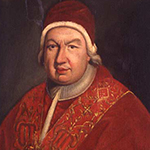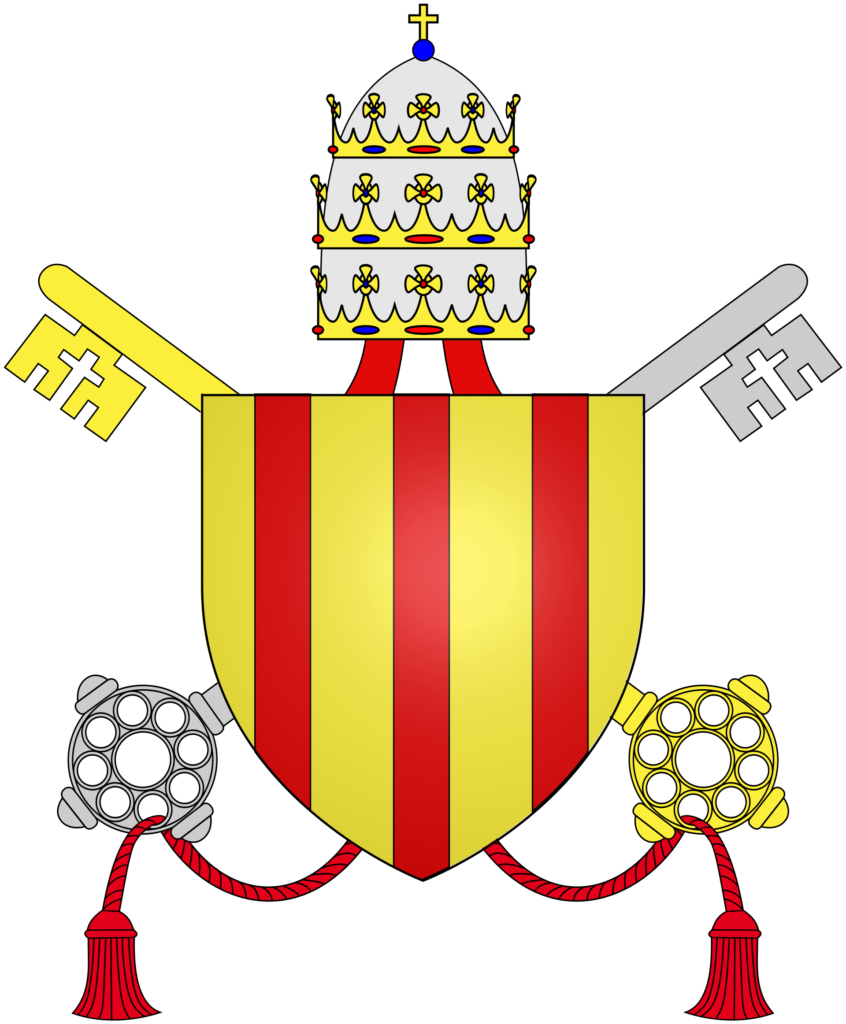
Pope Benedict XIV, born Prospero Lorenzo Lambertini in 1675, ascended to the papacy in 1740, marking the beginning of one of the most enlightened pontificates of the 18th century.
He was the 247th leader of the Catholic Church and the 14th pope to take the name “Benedict.”
His tenure as pope is celebrated for its intellectual rigor, ecumenical outreach, and significant contributions to the arts and sciences, setting him apart as a pontiff deeply engaged with the cultural and intellectual currents of his time.
This piece aims to explore the multifaceted legacy of Pope Benedict XIV, a leader whose visionary policies and scholarly approach not only advanced the Catholic Church’s engagement with the world but also left a lasting imprint on its doctrine and administration.
From his early days in Bologna to his profound impact on ecclesiastical law, church discipline, and support for scientific inquiry, join us as we delve into the life and times of a pope who navigated the complexities of the Enlightenment with wisdom and grace, reinforcing the Church’s relevance in an era of rapid change.
Pope Benedict XIV Profile
| Pontiff No. | Pontificate | English / Latin Name | Birth name | Date & Place of birth | Age at start/ end of papacy |
| #247 | 17 August 1740 – 3 May 1758 (17 years, 259 days) | Benedict XIV BENEDICTVS Quartus Decimus | Prospero Lorenzo Lambertini | 31 March 1675 Bologna | 65 / 83 |
Life Before the Papacy.
Prospero was born to Bolognese nobility and was the middle of five children belonging to Marcello Lambertini and Lucrezia Bulgarini. After years of education through private tutors, Prospero was sent to Convitto del Porto, then Rome’s Collegio Clementino at the age of 13.
That later educational institution is where he focuses on Latin, philosophy, rhetoric and theology. After spending an enjoyable amount of time studying those subjects, he gained an interest in civil and canon law. After turning 19 in 1694, he received doctorates in both subjects.
After joining the church, Lambertini assisted Msgr. Alessandro Caprara whom served as Auditor of the Rota. One year into Clement XI‘s papacy, Lambertini became a consistorial advocate, then Consultor of the Supreme Sacred Congregation of the Roman and Universal Inquisition and then Promoter of the Fatih in 1708.
During his tenure in this position, he saw to the canonization of Pius V and composed a treatise on beatification and canonization. Come 1712, Lambertini became Canon Theologus for the Vatican Basilica and also joined the Sacred Congregation of Rites. 1713 saw him become monsignor and then the Sacred Congregation of the Council’s secretary in 1718.
In June of 1724, two weeks into Benedict XIII‘s papacy, Lambertini became the bishop of Theodosia. A year later, Bishop Lambertini ordered that Bologna’s Istituto delle scienze ed Arti Liberali be painted by Carlo Salarolo. January of 1727 would see him become Bishop of Ancona and allowed to maintain his other titles and offices, including Abbot Commendatory of Pisa’s S. Stefano di Cintorio.
He became cardinal on December 6th, 1726, serving Gerusalemme’s Santa Croce church. April 30th, 1731 saw him become Bologna’s archibishop, during which time he would pen the three volume “De synodo dioecesana,” a text concerned with many aspects of the diocesan synod.
Benedict XIV Coat of Arms

List of Events In The Life of Pope Benedict XIV ( Carlo Reozzonico )
| Date | Age | Event | Title |
|---|---|---|---|
| 31 Mar 1675 | Born | ||
| 12 Jun 1724 | 49.1 | Appointed | Titular Archbishop of Teodosia |
| 16 Jul 1724 | 49.2 | Ordained Bishop | Titular Archbishop of Teodosia |
| 9 Dec 1726 | 51.6 | Elevated to Cardinal | In Pectore |
| 20 Jan 1727 | 51.8 | Appointed | Archbishop (Personal Title) of Ancona e Numana, Italy |
| 30 Apr 1728 | 53.0 | Elevated to Cardinal | |
| 10 May 1728 | 53.1 | Installed | Cardinal-Priest of Santa Croce in Gerusalemme |
| 30 Apr 1731 | 56.0 | Appointed | Archbishop of Bologna, Italy |
| 17 Aug 1740 | 65.3 | Elected | Pope (Roma, Italy) |
| 22 Aug 1740 | 65.3 | Installed | Pope (Roma, Italy) |
| 14 Jan 1754 | 78.7 | Resigned | Archbishop of Bologna, Italy |
| 3 May 1758 | 83.0 | Died | Pope (Roma, Italy) |
Papal Legacy.
- Revising “Pastoralis Romani Pontificis” so that it excommunicated all Protestant denominations and was written in such a way that it excommunicated all of Spain and France.
- He reformed the Papal States’ ailing economy to favor free trade and agriculture at the expense of its bloated and overpaid military.
- He was contemptuous of preaching via translation.
Quick Facts About Benedict XIV.
- He was born on March 31st, 1675 in the Papal States, specifically within the town of Bologna in Emilia-Romagna.
- His given name was Prospero Lorenzo Lambertini.
- He died on May 3rd, 1758.
- The circumstances surrounding his death are nothing more than an exacerbation of the kidney problems he had suffered from for years. A bout of gout was the final straw.
- His papacy began August 17th, 1740.
- His papacy ended with his life.
- His papal successor was Clement XIII.
Five Interesting Facts About Benedict XIV.
- He continued the back-and-forth of papal ascension between Benedicts and Clements.
- His favorite author, as well as saint, was St. Thomas Aquinas.
- Despite doing nothing about the issue, he did not like the prevalence of castrati for choir boys.
- After becoming pope, he continued to send an annual gift to Ancona’s church, consisting of things like sacred gold and silver vessels and new altar appointments, new clerical vestments, and so on.
- Even after becoming pope, he maintained the office of his Archbishopric until January 14th, 1754.
List of Other Popes Named Benedict
There has has been 15 Popes that have taken the name Benedict in the history of the papacy. Below are links to all of them. Also check out all of the other Popes the begin with the letter B.